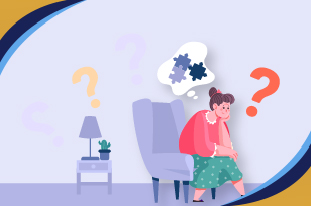Phobias can cause severe disruption or sadness in someone’s life. They can affect personal and professional life, affecting self-esteem, and ruining interpersonal relationships. Pistanthrophobia is related to trust. Trust is essential in a relationship, whether with friends or partners. People who have Pistanthrophobia have a deep fear of trusting people, forming romantic relationships, and building interpersonal bonds. It might feel ridiculous to many of you but for some people, it is like an impossible feat. In this blog, we will see the definition, symptoms, and treatment options for Pistanthrophobia.
Pistanthrophobia Definition
When we talk about the meaning of PISTANTHROPHOBIA we need to see the history of this word. It is a Greek word meaning “trust” and “fear”. It is related to the fear of trusting people, aroused from past experiences, specifically from the traumatic ending of a romantic relationship. It’s like the fear of getting hurt by someone in a relationship.
To qualify this fear as a phobia, it must be consistent, baseless, and not rooted in reality. People who suffer from phobia are not in actual danger, but their perception of reality makes them feel like it is real.

There is not much research specifically on Pistanthrophobia, and it is not recognized in the Diagnostic and Statistical Manual of Mental Disorders (DSM-V). But it has gained so much popularity in recent years. All types of phobias can affect a person’s life, but Pistanthrophobia is uniquely different and more harmful because it makes it difficult to trust people. Trust is integral in relationships and the inability to trust makes a person unfit for the environment.
Read More: Beyond the Basics: Unfolding the Mystery of Specific Phobia
Pistanthrophobia Symptoms
Some specific types of behaviors have been observed among a Pistanthrophobia person. Pistanthrophobia signs include avoidance of conversations or deep interactions with a person you have a crush on, being guarded or withdrawn, avoiding engaging in flirtation, dating, or romantic relationships, experiencing GAD (general anxiety disorder) or an appearance of wanting to get out of conversations that are becoming uncomfortable, especially as they relate to intimacy, dating, or a prospective love interest.
If you feel there is room for Pistanthrophobia in a relationship or you observe any symptoms in your relationship, along with the behavioral symptoms, there are physical symptoms as well.
- Palpitations
- Faintness Breathing difficulties
- Tightness in chest
- Dizziness
- Nausea
- Excessive panic or fear disproportionate to the situation
- Overwhelming sense of acute stress
- Trembling
Pistanthrophobia, like any other phobia, must be identified with a mental health professional.
Pistanthrophobia Causes
After understanding the signs of Pistanthrophobia, we need to know the reasons for Pistanthrophobia. Like any other phobia, it is also triggered by a person or event. There can be various triggers that vary from person to person, but this type of phobia is often caused by a traumatized relationship.
Read More: The Association of Panic Disorder with Agoraphobia
The most common reason for having this phobia is an experience gained by trusting someone before and having painful experiences. Below are the major causes
- Trust issues occur when your partner cheats or lies, leaving you traumatized.
- Young children who get neglected and abused, grow up and develop trust phobias.
- People who get emotionally abused have this severe fear of being left alone.
- Gaslighting leads to a person not being able to trust as a means of self-protection.
Pistanthrophobia: How to Overcome?
There is no direct way to diagnose Pistanthrophobia according to the DSM-V, so when a mental health professional examines a patient, he diagnoses it under the treatment for a specific phobia. So the question arises: is Pistanthrophobia common? Because if it is not common, there might not be a solution. But there are many solutions for treating phobias including therapies, medication, and self-care activities.
Medication Management
Medication is not usually used for Pistanthrophobia treatment, they are commonly treated with therapies. But in rare cases, the exceptions are benzodiazepines and beta-blockers. Benzodiazepines are also used for the treatment of depression or MDD (major depressive disorder). In this case, they are not used to treat phobia, but they can reduce the level of anxiety.
Cognitive Behavioral Therapy
Pistanthrophobia therapy is the best solution for treating this phobia. In cognitive-behavioral therapy (CBT), the therapist finds the negative thought patterns related to trust and fear. In this way, a person can reframe their thoughts and take control of their mind. CBT is considered the best psychotherapy, as it is also used for treating other mental disorders including schizophrenia and ADHD.
Exposure Therapy
This is a subtype of CBT in which the subject is exposed to their triggers. In Pistanthrophobia, the therapist may start by asking you personal questions and making you feel uncomfortable, which will eventually help you control your emotions much more easily.
Read More: Let’s Talk About Agoraphobia Treatment

Self-Care Techniques
Take small steps to keep up your trust. Share a small thing with someone you trust and see how they react. Slowly share the little things you feel more comfortable with. This can help in rejuvenating your social life because activities such as these can help you in deterring your fear. Making changes to your life can help you minimize Pistanthrophobia symptoms, like sleeping 8 hours, exercising, eating nutrient-rich food, and drinking water. Meditation and yoga are also helpful.
Medical Solutions From Orange Coast Psychiatry
Are you suffering from Pistanthrophobia and do not know what to do? Do not worry, we are here to help you. From CBT and IPT to medication and self-care tips, our solutions are evidence-based and benefit clients. Whether you want clinical diagnosis or telehealth services, we at Orange Coast Psychiatry are always here to help you receive the care you deserve.
Read More: Vicarious Trauma: The Signs, Causes, And Available Treatments
Conclusion
Phobias like Pistanthrophobia can affect your emotions and ability to connect with your partner in a relationship. While addressing the deep problems that are triggering the phobia may be uncomfortable, in time you can learn new ways to trust people and enter into a healthy relationship. There are many ways from CBT, exposure therapy to self-care activities. You might need medical assistance, Orange Coast Psychiatry is your premium choice.


















